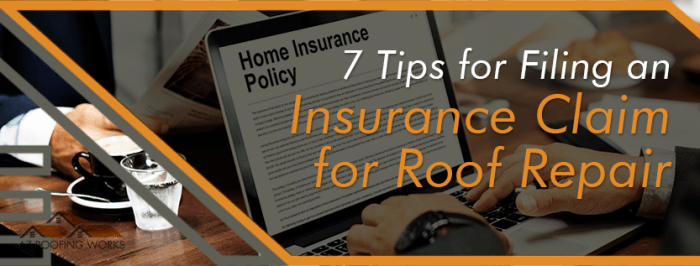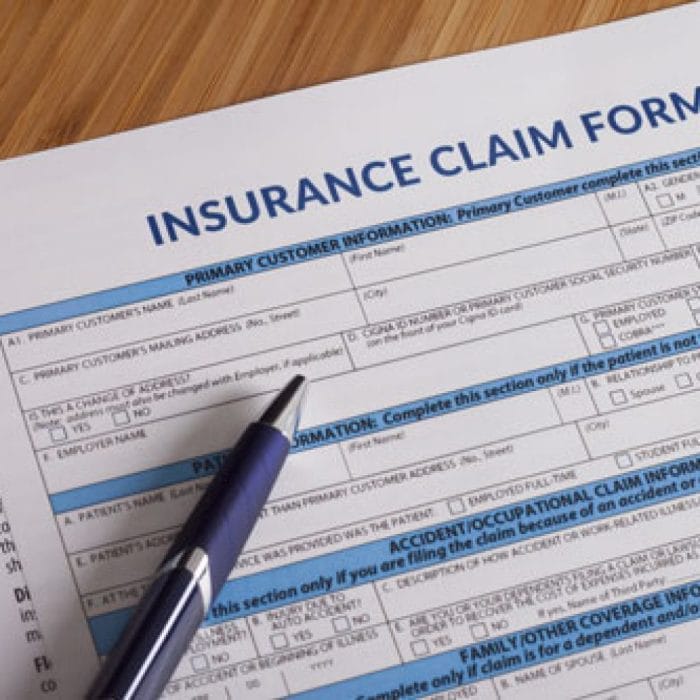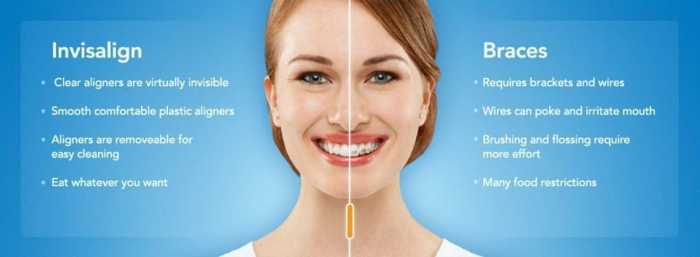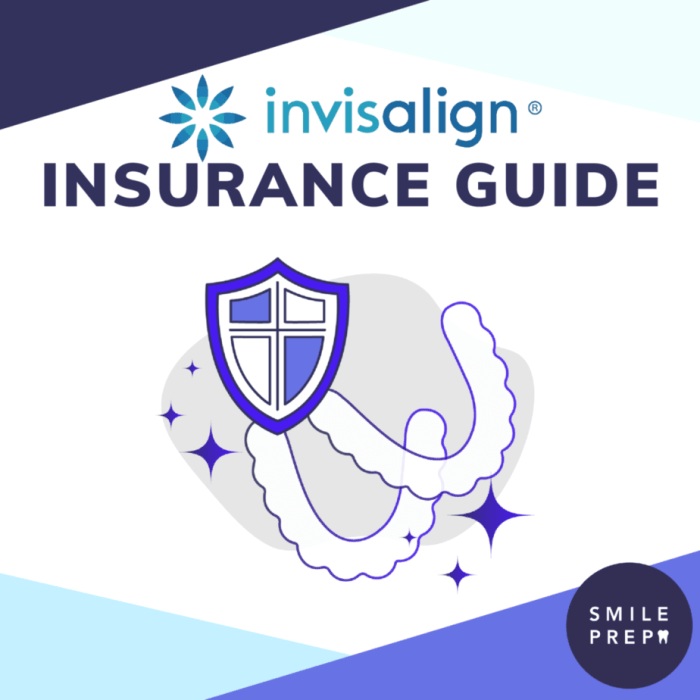Navigating the complexities of insurance claims can be daunting, especially when it comes to specialized treatments like Invisalign. This comprehensive guide aims to demystify the process, providing valuable tips and strategies to ensure a smooth and successful Invisalign insurance claim experience.
In this detailed exploration, we will delve into the intricacies of filing Invisalign insurance claims, covering everything from understanding coverage options to maximizing reimbursement. Whether you’re just starting your Invisalign journey or are looking to optimize your insurance benefits, this guide has you covered.
Filing Process

Filing Invisalign insurance claims involves several key steps. Follow these guidelines to ensure a smooth and successful claim submission.
Gather Necessary Documentation
Before filing your claim, gather all necessary documentation to support your claim. This typically includes:
- Invisalign treatment plan and prescription from your dentist or orthodontist.
- Proof of insurance coverage, such as your insurance card or a letter of benefits from your insurance provider.
- Receipts or invoices for Invisalign treatment payments you have made.
- Any pre-authorization or pre-determination forms required by your insurance provider.
Complete Claim Forms
Obtain the appropriate claim forms from your insurance provider or download them from their website. Carefully review the instructions and fill out the forms completely and accurately.
Be sure to include the following information on the claim form:
- Your name, address, and contact information.
- Your insurance policy number and group number (if applicable).
- The date of service for your Invisalign treatment.
- The name and address of your dentist or orthodontist.
- The amount you paid for Invisalign treatment.
- The amount you are claiming from your insurance provider.
Submit Your Claim
Once you have completed the claim forms and gathered all necessary documentation, you can submit your claim to your insurance provider.
You can submit your claim electronically through your insurance provider’s website or mobile app, or you can mail the claim forms and supporting documentation to the address provided by your insurance provider.
Insurance Coverage

Invisalign treatment is often covered by dental insurance plans, offering financial assistance to those seeking orthodontic care. Navigating the insurance coverage landscape can be complex, but with careful planning and understanding, you can maximize your benefits.
Types of Dental Insurance Plans
Dental insurance plans vary in their coverage for Invisalign treatment. Common types of plans that may offer coverage include:
- PPO (Preferred Provider Organization): PPO plans provide a network of dentists who have agreed to provide services at discounted rates. You can choose any dentist within the network and still receive coverage, though out-of-network dentists may offer lower coverage.
- DHMO (Dental Health Maintenance Organization): DHMO plans require you to choose a dentist within their network. While these plans typically have lower premiums, they may have stricter coverage limitations and higher out-of-network costs.
- Dental Indemnity Plans: Dental indemnity plans provide a fixed dollar amount for covered services. You can choose any dentist, but the plan will reimburse you up to the coverage limit, leaving you responsible for any remaining costs.
Determining Coverage for Invisalign
To determine if your dental insurance plan covers Invisalign treatment, follow these steps:
- Check Your Policy: Carefully review your dental insurance policy or contact your insurance provider to confirm whether Invisalign treatment is covered.
- Confirm Coverage Details: If Invisalign is covered, find out the specific details of your coverage, including the percentage of treatment costs covered, any annual or lifetime maximums, and any limitations or exclusions.
- Consult Your Dentist: Your dentist can provide valuable insights into your insurance coverage and help you understand how it applies to your specific treatment plan.
Maximizing Insurance Coverage
To maximize your insurance coverage for Invisalign treatment, consider the following tips:
- Choose an In-Network Provider: If you have a PPO or DHMO plan, choosing an in-network dentist can result in lower out-of-pocket costs and simplified claims processing.
- Understand Your Plan’s Coverage: Familiarize yourself with your plan’s coverage details, including annual maximums and exclusions. This will help you plan your treatment accordingly and avoid unexpected expenses.
- Consider a Dental Savings Plan: If your insurance coverage is limited or non-existent, consider enrolling in a dental savings plan. These plans allow you to set aside funds for dental expenses, including Invisalign treatment.
- Flexible Spending Account (FSA) or Health Savings Account (HSA): If you have an FSA or HSA, you may be able to use these tax-advantaged accounts to cover Invisalign treatment costs.
Pre-Approval
Before starting your Invisalign treatment, it’s crucial to obtain pre-approval from your insurance company. Pre-approval is a process where your insurance provider reviews your dental records and treatment plan to determine if Invisalign is a covered benefit and to what extent.
Obtaining pre-approval has several benefits:
- Financial Clarity: You’ll have a clear understanding of the financial coverage you can expect from your insurance company, helping you plan your budget accordingly.
- Treatment Confidence: Knowing that your treatment is pre-approved gives you peace of mind and confidence in moving forward with Invisalign.
- Timely Processing: Pre-approval can expedite the claims processing, ensuring that you receive reimbursement promptly after treatment.
Step-by-Step Guide to Obtaining Pre-Approval:
Here’s a step-by-step guide to help you obtain pre-approval for Invisalign treatment:
- Contact Your Insurance Provider: Reach out to your insurance company’s customer service department or visit their website to initiate the pre-approval process.
- Provide Necessary Information: Be prepared to furnish your insurance company with relevant information, including your policy number, member ID, and details of your dental condition.
- Submit Treatment Plan: Obtain a detailed treatment plan from your dentist or orthodontist that Artikels the recommended Invisalign treatment, including the number of aligners, treatment duration, and estimated costs.
- Complete Pre-Approval Form: Your insurance company may provide a pre-approval form that requires you to provide additional information about your dental history and the reasons for seeking Invisalign treatment.
- Submit Required Documentation: Along with the pre-approval form, you may need to submit supporting documents, such as X-rays, diagnostic records, and photographs of your teeth.
- Await Approval: Once you’ve submitted all the necessary information, your insurance company will review your request and notify you of their decision. The approval process can take a few days to several weeks, depending on the insurance company’s policies.
Tips for Communicating with Your Insurance Company:
Effective communication with your insurance company can enhance the pre-approval process:
- Be Clear and Concise: When speaking to your insurance provider, be clear and concise in explaining your dental condition and the reasons for seeking Invisalign treatment.
- Provide Accurate Information: Ensure that the information you provide to your insurance company is accurate and complete. Inaccurate information can delay or even jeopardize your pre-approval.
- Be Patient and Persistent: The pre-approval process can sometimes be lengthy and may require follow-up inquiries. Be patient and persistent in following up with your insurance company until you receive a final decision.
- Seek Professional Guidance: If you encounter difficulties in communicating with your insurance company or need assistance in understanding your policy, consider consulting with a dental insurance expert or your dentist’s office.
Claim Forms
To ensure your Invisalign insurance claim is processed smoothly, it’s crucial to submit all necessary claim forms accurately and completely. These forms typically include:
Pre-Determination of Benefits Form
This form is used to inquire about your insurance coverage for Invisalign treatment before you start. It allows you to understand your estimated benefits and out-of-pocket costs. Fill it out with your personal information, insurance details, and treatment plan provided by your dentist.
Claim Form
This is the main form used to submit your Invisalign insurance claim after treatment. It typically includes sections for patient information, provider information, treatment details, and financial information. Ensure you provide accurate and detailed information, including receipts, invoices, and any supporting documentation.
Assignment of Benefits Form
This form authorizes your insurance company to pay the Invisalign provider directly. It helps streamline the reimbursement process and eliminates the need for you to pay the provider upfront. Fill it out with your personal information, insurance details, and the provider’s information.
Tips for Completing Claim Forms:
- Read Instructions Carefully: Each insurance company may have specific requirements for filling out claim forms. Read the instructions thoroughly to ensure you understand what information is required.
- Be Accurate and Complete: Provide accurate and complete information in all sections of the claim form. Incomplete or inaccurate information can delay or even deny your claim.
- Use Clear and Legible Handwriting: If you’re filling out the forms manually, use clear and legible handwriting to avoid any confusion or misinterpretation.
- Attach Supporting Documentation: Include copies of receipts, invoices, and any other supporting documentation that verifies the treatment and expenses incurred.
- Keep Copies for Your Records: Always keep copies of all the claim forms and supporting documentation for your records. This will be helpful in case of any inquiries or disputes.
Documentation

Compiling comprehensive and accurate documentation is essential for successful Invisalign insurance claims. Proper organization and attention to detail will enhance the efficiency of the claim review process and increase the likelihood of claim approval.
The following documents are typically required for Invisalign insurance claims:
- Invisalign Treatment Plan: This document Artikels the specific treatment plan prescribed by the dentist, including the number of aligners, the duration of treatment, and the estimated cost.
- Dental Records: These include X-rays, photographs, and any other relevant dental records that support the need for Invisalign treatment.
- Medical History: This document provides information about the patient’s overall health, including any pre-existing conditions that may affect the Invisalign treatment.
- Insurance Policy: A copy of the patient’s dental insurance policy, including the specific benefits and coverage for orthodontic treatment.
- Pre-Approval Form: If required by the insurance company, a pre-approval form should be completed and submitted prior to the start of treatment.
- Claim Form: This is the form used to submit the claim to the insurance company. It typically includes information about the patient, the dentist, the treatment, and the charges.
To obtain these documents, patients should work closely with their dentist and insurance company. The dentist can provide the Invisalign treatment plan, dental records, and medical history. The insurance company can provide the insurance policy and claim form.
When organizing the documentation, it is important to ensure that all documents are complete, accurate, and legible. The documents should be organized in a logical order, such as chronological order or by document type. It is also helpful to create a cover letter or summary that provides an overview of the claim and highlights any important information.
By following these tips, patients can ensure that their Invisalign insurance claims are complete, accurate, and well-organized, increasing the chances of a successful claim approval.
Claim Submission

Filing Invisalign insurance claims involves submitting the necessary documentation to your insurance company to seek reimbursement for treatment costs. There are several methods available for submitting claims, including online, mail, and in-person.
Online Claim Submission
Many insurance companies offer online portals where you can submit claims electronically. This is often the quickest and most convenient method, as it allows you to upload all required documents directly from your computer or mobile device. To submit a claim online:
- Visit your insurance company’s website and log in to your account.
- Locate the claims section and select the option to submit a new claim.
- Enter the required information, such as your policy number, date of service, and amount of the claim.
- Upload the necessary documentation, including your Invisalign treatment plan, invoices, and receipts.
- Review your claim for accuracy and submit it to your insurance company.
Mail-In Claim Submission
If you prefer to submit your claim by mail, you can obtain a claim form from your insurance company’s website or by calling their customer service department. Once you have the claim form, fill it out completely and attach the required documentation.
Mail the completed claim form and documentation to the address provided by your insurance company.
In-Person Claim Submission
In some cases, you may be able to submit your claim in person at your insurance company’s office. This is typically the least convenient option, but it may be necessary if you have complex documentation or need immediate assistance.
Tracking Your Claim Status
Once you have submitted your claim, you can track its status online or by calling your insurance company’s customer service department. Most insurance companies provide a dedicated website or phone number for checking the status of claims. By tracking your claim, you can stay informed of its progress and follow up with your insurance company if necessary.
Tips for Following Up with Your Insurance Company
If you have not received a response to your claim within a reasonable amount of time, you may need to follow up with your insurance company. Here are some tips for following up:
- Call your insurance company’s customer service department and speak to a representative.
- Provide the representative with your policy number and claim number.
- Inquire about the status of your claim and ask when you can expect a response.
- Be polite and persistent, but avoid being confrontational.
Claim Denials

Despite taking all necessary steps, Invisalign insurance claims can still be denied. Common reasons for claim denial include lack of pre-authorization, exceeding policy limits, treatment not deemed medically necessary, and failure to meet specific plan requirements. To increase the chances of claim approval, it’s crucial to carefully review the insurance policy, ensuring all criteria are met.
If a claim is denied, one can appeal the decision by submitting additional documentation, seeking a peer review, or filing a complaint with the state insurance department.
Tips for Appealing Denied Claims
- Review the Explanation of Benefits (EOB): Understand the specific reason for the denial. The EOB provides details on the claim status and the reason for denial.
- Gather Additional Documentation: Collect any additional information that supports the medical necessity of the treatment, such as updated medical records, x-rays, or a letter from the treating orthodontist.
- Request a Peer Review: Some insurance companies offer a peer review process, where an independent dental expert reviews the claim and makes a recommendation. This can be a valuable step in overturning a denied claim.
- File a Complaint with the State Insurance Department: If all else fails, one can file a complaint with the state insurance department. This can help resolve the issue and ensure that the insurance company follows the proper procedures.
Success Stories of Appealed Denied Claims
Numerous individuals have successfully appealed denied Invisalign insurance claims. Here’s an inspiring story:
Jane’s Story: Jane’s Invisalign claim was initially denied due to a lack of pre-authorization. She promptly contacted her insurance company, explained the situation, and submitted the necessary pre-authorization forms. After a thorough review, the insurance company approved the claim, and Jane was able to proceed with her treatment.
Insurance Coverage Maximization

To maximize insurance coverage for Invisalign treatment, consider the following strategies:
Negotiate with your insurance company: Many insurance companies offer some coverage for Invisalign treatment. However, the amount of coverage may vary depending on your plan and the terms of your policy. Contact your insurance company and inquire about your coverage for Invisalign.
Be prepared to negotiate with your insurance company to get the best possible coverage.
Negotiating Tips
- Be polite and respectful.
- Explain your case and why you need Invisalign treatment.
- Be prepared to provide documentation from your dentist or orthodontist.
- Be willing to compromise.
- Don’t give up easily.
Get pre-approval: Before you start Invisalign treatment, get pre-approval from your insurance company. This will help you avoid any surprises when you file your claim.
Use the correct claim forms: When you file your claim, use the correct claim forms. These forms are available from your insurance company.
Include all necessary documentation: When you file your claim, include all necessary documentation. This includes a letter of medical necessity from your dentist or orthodontist, a treatment plan, and receipts for your Invisalign treatment.
File your claim promptly: File your claim promptly after you receive your Invisalign treatment. This will help you avoid any delays in processing your claim.
Appeal denied claims: If your claim is denied, you can appeal the decision. The appeals process varies depending on your insurance company. Contact your insurance company for more information.
Timeline and Reimbursement

Invisalign insurance claims processing times can vary depending on the insurance provider and the complexity of the claim. Generally, the process can take anywhere from a few weeks to several months. Factors that can affect the speed of the claim process include the completeness of the claim form, the accuracy of the documentation provided, and the insurance company’s processing time.
Tips for Getting Reimbursed Quickly and Efficiently
To get reimbursed quickly and efficiently, it is important to:
- Submit a complete and accurate claim form.
- Include all necessary documentation, such as a copy of the insurance policy, a letter of medical necessity from the dentist, and receipts for Invisalign treatment.
- Submit the claim as soon as possible after receiving treatment.
- Follow up with the insurance company regularly to check on the status of the claim.
Case Studies
Real-life case studies offer valuable insights into the challenges and strategies used to successfully file Invisalign insurance claims. These cases provide practical lessons and guidance for individuals navigating the insurance claim process.
Challenges Faced
Common challenges faced by individuals filing Invisalign insurance claims include:
- Lack of Coverage: Some insurance plans may not cover Invisalign treatment, or they may have limited coverage.
- Pre-Approval Requirements: Many insurance companies require pre-approval for Invisalign treatment before it is covered.
- Claim Forms and Documentation: Filing insurance claims often involves completing complex forms and providing extensive documentation.
- Claim Denials: Insurance claims can be denied due to various reasons, such as ineligibility, lack of pre-approval, or insufficient documentation.
Strategies for Success
Individuals who have successfully filed Invisalign insurance claims often employed the following strategies:
- Researching Insurance Coverage: Understanding the details of their insurance plan and coverage for orthodontic treatment.
- Obtaining Pre-Approval: Contacting their insurance company to obtain pre-approval for Invisalign treatment before starting the process.
- Proper Documentation: Gathering and organizing all necessary documentation, including treatment plans, receipts, and insurance forms.
- Appealing Denied Claims: If a claim is denied, filing an appeal with the insurance company and providing additional documentation or information.
Case Study: Sarah’s Experience
Sarah, a 25-year-old professional, faced the challenge of limited insurance coverage for Invisalign treatment. Her insurance plan covered only a portion of the treatment cost, leaving her responsible for the remaining balance. To overcome this challenge, Sarah researched alternative payment options and negotiated with her dentist to create a payment plan that fit her budget.
Case Study: John’s Pre-Approval Process
John, a 40-year-old business owner, was determined to get Invisalign treatment but was concerned about the pre-approval process. He contacted his insurance company early on to inquire about the requirements and necessary documentation. By following the pre-approval guidelines and submitting all required information, John was able to secure approval for his Invisalign treatment.
Case Study: Emily’s Claim Submission
Emily, a 16-year-old high school student, faced the challenge of completing insurance claim forms and gathering documentation. With the help of her parents, she carefully filled out the forms and collected all necessary receipts and treatment records. By organizing and submitting her claim promptly, Emily was able to receive reimbursement for her Invisalign treatment.
Case Study: Robert’s Claim Denial and Appeal
Robert, a 35-year-old engineer, initially faced a denied insurance claim for his Invisalign treatment. Undeterred, he contacted his insurance company to understand the reason for the denial. Upon reviewing his documentation, Robert realized that he had missed submitting a key form.
He promptly submitted the missing form and filed an appeal, which resulted in the approval of his claim.
Summary

Filing Invisalign insurance claims doesn’t have to be a daunting task. By following the expert tips and strategies Artikeld in this guide, you can navigate the process confidently and maximize your insurance coverage. Remember, thorough preparation, clear communication, and persistence are key to a successful claim.
So, embrace this opportunity to enhance your smile while making the most of your insurance benefits.
FAQs
Q: How can I determine if my insurance plan covers Invisalign treatment?
A: Contact your insurance provider directly or check your policy documents to confirm coverage details. Some plans may require pre-authorization or have specific coverage limits.
Q: What are common reasons for Invisalign insurance claims to be denied?
A: Common reasons include ineligibility due to age or treatment type, failure to obtain pre-approval, incomplete or inaccurate documentation, and exceeding policy limits.
Q: How can I appeal a denied Invisalign insurance claim?
A: Contact your insurance provider to initiate the appeals process. Provide additional documentation, a written statement explaining the denial, and consider seeking professional assistance from a dental insurance advocate.
Q: How long does it typically take to process an Invisalign insurance claim?
A: The processing time can vary depending on the insurance company and the complexity of the claim. It’s important to submit all necessary documentation promptly to expedite the process.
Q: What strategies can I use to maximize my insurance coverage for Invisalign treatment?
A: Strategies include negotiating with your insurance provider, exploring flexible spending accounts (FSAs) or health savings accounts (HSAs), and considering dental discount plans.



